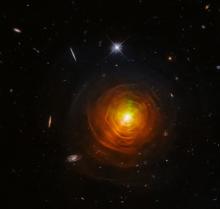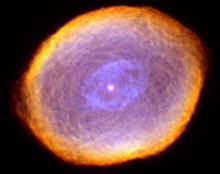Listen to today's episode of StarDate on the web the same day it airs in high-quality streaming audio without any extra ads or announcements. Choose a $8 one-month pass, or listen every day for a year for just $30.
You are here
More Lepus
Our Sun is a sedate middle-aged star. It’s been shining for about four and a half billion years, and it’s expected to keep shining for billions of years more.
But some stars that are well into the final stages of life are only a fraction of the Sun’s age. These stars are much heavier than the Sun, and it’s a star’s mass that determines its timeline.
An example is Arneb, the leading light of Lepus, the rabbit. The constellation stands below the feet of Orion, the hunter, which is in the southeast at nightfall.
Arneb is only about 13 million years old, yet it’s well into old age. In fact, it’s likely to expire within the next million years or so.
That’s because Arneb is about 14 times as massive as the Sun. Its gravity squeezes its core tightly. That makes the core extremely hot, which revs up the nuclear reactions that power the star.
The extreme radiation from the core pushes outward on the surrounding layers of gas, making the star puff up like a balloon. So Arneb is more than a hundred times the diameter of the Sun. If it took the Sun’s place in our own solar system, it would gobble up the planet Mercury and come close to Venus, the second planet from the Sun. And the star may get even bigger in the future.
Eventually, though, Arneb will no longer be able to generate nuclear reactions in its core. The core will then collapse, and the star’s outer layers will blast into space — bringing the short, brilliant life of Arneb to a fiery end.
Script by Damond Benningfield






